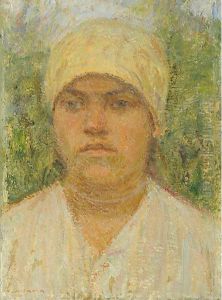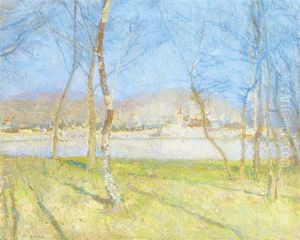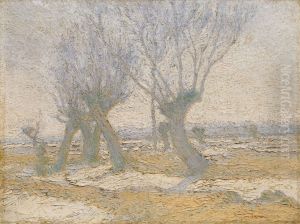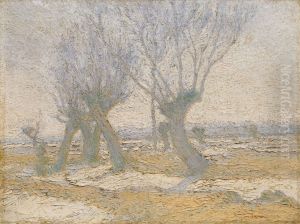Matija Jama Paintings
Matija Jama was a Slovenian painter, best known for his landscape paintings and his role in bringing Impressionism to the Slovene art scene. Born on January 4, 1872, in Ljubljana, which was at the time part of the Austro-Hungarian Empire, Jama was a prominent figure in his country's cultural life and was among the first generation of Slovenian artists to receive formal artistic training abroad.
He initially studied engineering in Vienna, but his passion for art prompted him to abandon this path. Jama continued his art studies in Munich, a city that was a vibrant art center at the turn of the 20th century. He was particularly influenced by the works of the Munich Secession and the broader European Impressionist movement. In Munich, he became close friends with another Slovenian painter, Rihard Jakopič, with whom he later founded an artists' society back in Slovenia, aiming to promote Impressionist techniques and ideas.
Jama's works are characterized by a sensitive use of color and light, often depicting the Slovenian landscape. He captured the changing moods of nature, from the snowy peaks of the Alps to the lush countryside and Adriatic coast. His attention to light effects and atmosphere links his work to the broader Impressionist movement, yet his subjects remained distinctively Slovene.
After World War I, Matija Jama continued to paint and exhibit his work. He also engaged in artistic life in the newly formed Kingdom of Serbs, Croats, and Slovenes (later Yugoslavia), promoting Slovenian art and culture. During his later years, Jama's style became more subdued, and he focused on more intimate landscapes and still lifes.
Matija Jama passed away on November 22, 1947, in Belgrade, Yugoslavia. His legacy is preserved in the National Gallery of Slovenia and other institutions, which hold many of his works. Jama remains a seminal figure in Slovenian art history, celebrated for his role in introducing Impressionism to the region and for his evocative depictions of the Slovenian landscape.



